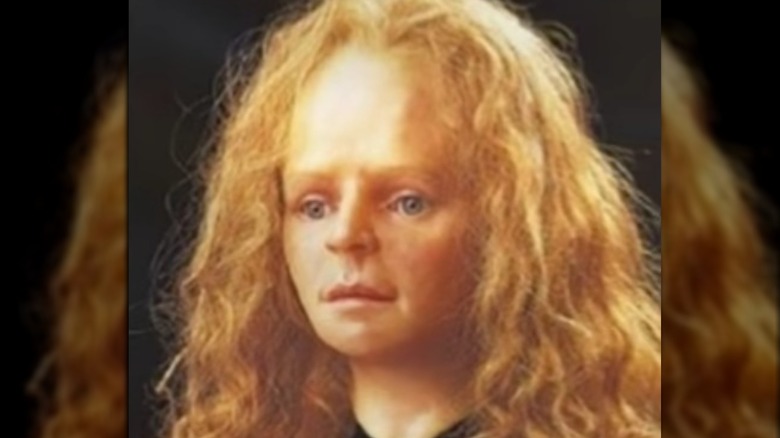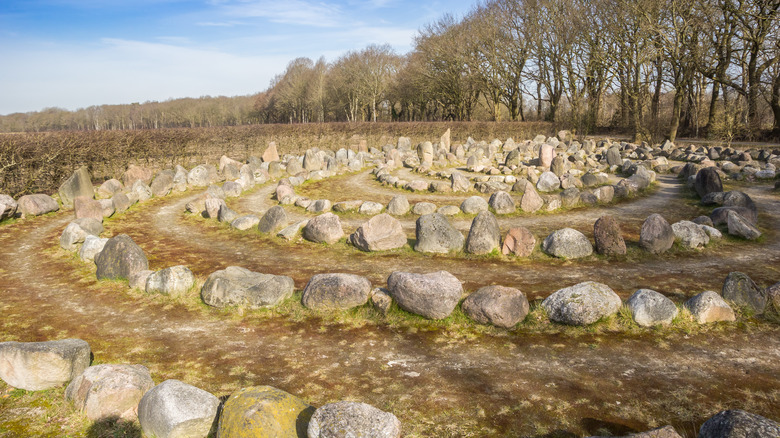The Truth About The World's Most Infamous Mummy, The Yde Girl
In 1897, two Dutch laborers near the village of Yde in the Netherlands were working in a bog when they made a horrifying discovery (via All That's Interesting). A deformed dark body with fiery red hair came to the surface, causing them to run away in fear. According to Atlas Obscura, the laborers returned to hide the body, but eventually, it was uncovered by the town's mayor.
The mayor collected the remains and sent them to the local Drents Museum for observation, but not before the locals removed teeth and pieces of hair. With a lack of technology in the 19th century, little could be discovered about the body.
However, what was found was presumed to be a girl in a dark woolen cloak with half of her hair cut off (via Wageningen University). In addition, she had a cord knotted around her neck and a harrowing expression on her face. Her limbs had also been severed. The Yde girl's age, as well as her cause of death, would remain a mystery for nearly 100 years.
The Yde girl was most likely sacrificed
According to All That's Interesting, a 1992 CT scan revealed the Yde girl to be around 16-years-old (due to her lack of wisdom teeth) and to have died between 54 B.C. and 128 A.D. Likewise, she stood at only four-and-a-half-feet tall and was suffering from severe scoliosis. It was also determined that she had some sort of limp or awkward gait (via PBS).
It was clear she had been killed, either through strangulation or by being stabbed in the neck (per Drents Museum). The real question, however, was why. As explained by Wageningen University, there are two theories. The first involves bog bodies (like the Yde girl) being killed for living against the norm of what was customary at the time. Perhaps some sort of criminal act or adultery had occurred.
The second theory is that she was sacrificed to a higher power for agricultural purposes. As there is no evidence to suggest the Yde girl had a husband, researchers lean more towards the theory that she was sacrificed. Likewise, her severe deformations and disabilities would have made her an ideal candidate for sacrifice.
The Yde girl was preserved due to the bog's anaerobic and acidic conditions. She was so well preserved that a facial reconstruction was possible in 1994. However, when she was first unearthed, the locals damaged her as they tore at her body (per Atlas Obscura). Luckily, the Drents Museum intervened and preserved what was left. Today, both her remains and her facial reconstruction can be found on display there.

